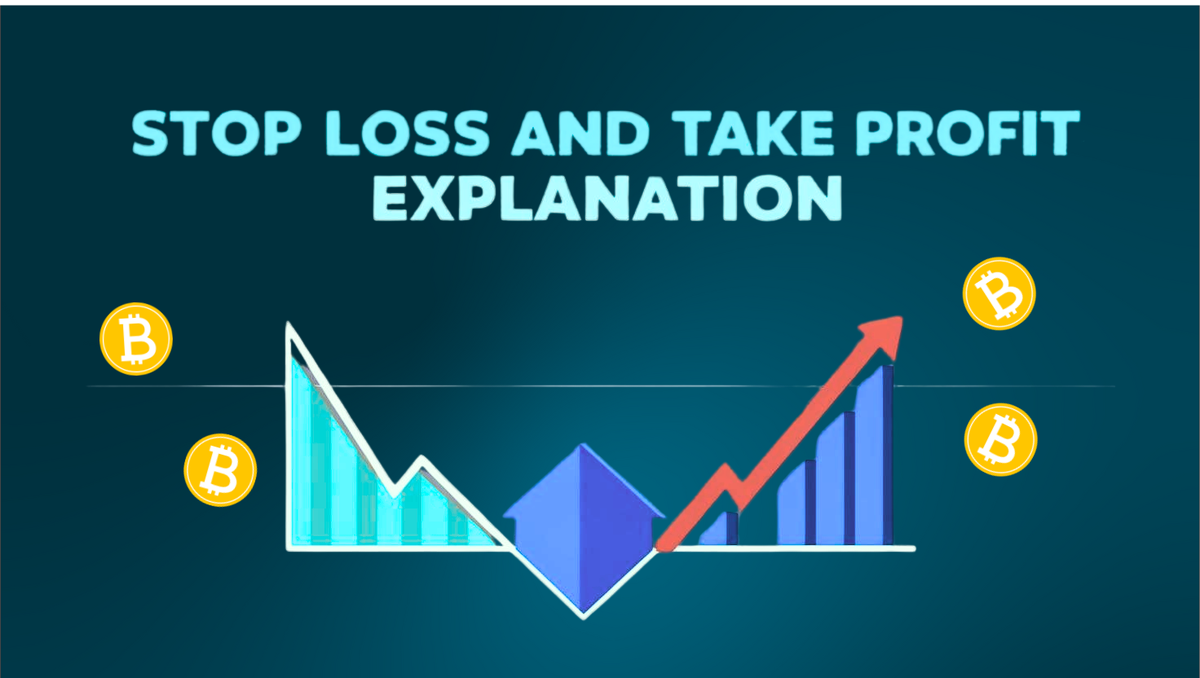Learn how Take Profit and Stop Loss orders work in crypto trading, why they're essential for managing risk and locking in gains, and how The Trade Pilot bot makes them easy to configure.
In the fast-paced world of crypto trading, prices can rise or fall dramatically within minutes. That’s why smart traders use tools to manage their trades automatically—especially Take Profit and Stop Loss orders.
These tools help protect your capital and secure profits without requiring you to constantly watch the market. Whether you're trading manually or using an automated bot like The Trade Pilot, understanding how these mechanisms work is essential.
What Is a Take Profit?
A Take Profit (TP) is a pre-set order that automatically sells a crypto asset once it reaches a certain price. It’s used to lock in profits when the market moves in your favor.
Let’s say you buy Bitcoin at $30,000 and set a TP at $31,500. If the price hits $31,500, the order is triggered, and your position is closed automatically with a profit. You don’t need to be online or watching the chart—the system does it for you.
Why Use It?
- Locks in gains before a potential reversal
- Helps prevent greed from holding a position too long
- Adds structure and discipline to your strategy
What Is a Stop Loss?
A Stop Loss (SL) is the opposite of a Take Profit. It automatically closes your position if the price moves against you by a certain amount. The goal is to limit your loss before it gets worse.
Example: You buy Ethereum at $2,000 and set an SL at $1,900. If the price drops to $1,900, the SL is triggered, and your asset is sold—capping your potential loss at $100 per ETH.
Why Use It?
- Prevents large losses from unexpected moves
- Protects your capital for future trades
- Encourages calculated risk-taking
How Take Profit and Stop Loss Work Together
TP and SL are often used in tandem to define a trade’s risk-to-reward ratio. This simply means how much you're willing to risk versus how much you aim to gain.
For example:
- Entry: Buy ADA at $0.50
- TP: $0.60 (potential gain: $0.10)
- SL: $0.45 (potential loss: $0.05)
- Risk-to-reward ratio: 1:2 (you risk $1 to gain $2)
A good risk-to-reward ratio increases your chances of long-term success. You don’t need to win every trade if your winning trades pay off more than your losing ones.
Using TP and SL in The Trade Pilot
The Trade Pilot makes it easy to set both Take Profit and Stop Loss in your trading configuration.
- Take Profit is set as a percentage above your buy price (e.g., 2%). Once the asset’s price hits that target, the bot automatically places a sell order.
- Stop Loss is optional and also set as a percentage. If enabled, the bot monitors the price and exits the position once it drops to your SL level.
These values can be adjusted per strategy, giving you the flexibility to match your trading goals. Whether you're using basic strategies or more advanced setups like rebuys and DCA, TP and SL provide a safety net for your trades.
Manual Trading vs. Automated TP/SL
In manual trading, you need to watch charts closely and execute TP/SL orders yourself. This can be stressful, error-prone, and time-consuming. Bots like The Trade Pilot automate these processes for you, allowing you to stick to your strategy even when you're offline.
Benefits of automation:
- No emotional decision-making
- Instant execution
- Trade 24/7 across multiple assets
When to Avoid TP or SL?
In some strategies—like long-term holding or very low-timeframe scalping—traders might choose not to use these tools. However, this comes with higher risk and requires more experience and attention.
For most beginners and intermediate traders, using TP and SL is strongly recommended. They form the foundation of sound risk management.
Final Thoughts
Take Profit and Stop Loss are essential tools for managing trades and emotions in crypto. They help you secure profits, limit losses, and create a disciplined trading approach.
With The Trade Pilot, you can automate these orders effortlessly and focus on your strategy—not on watching the screen.

